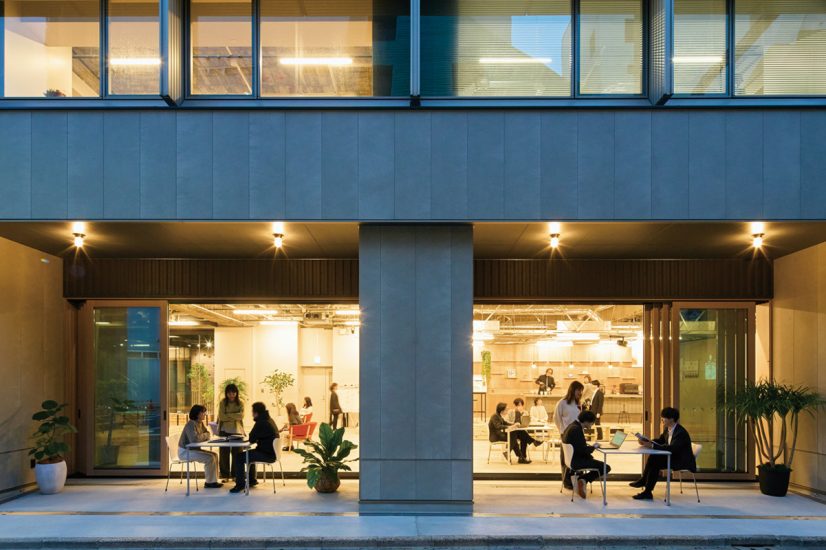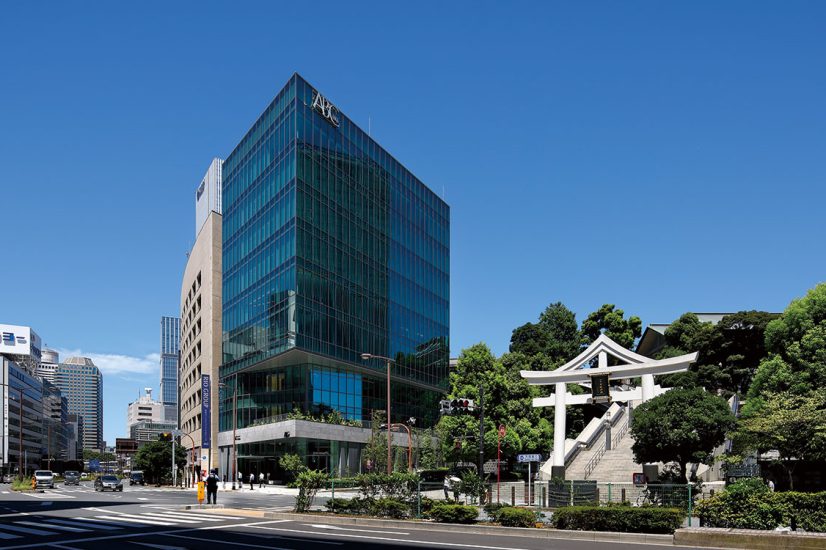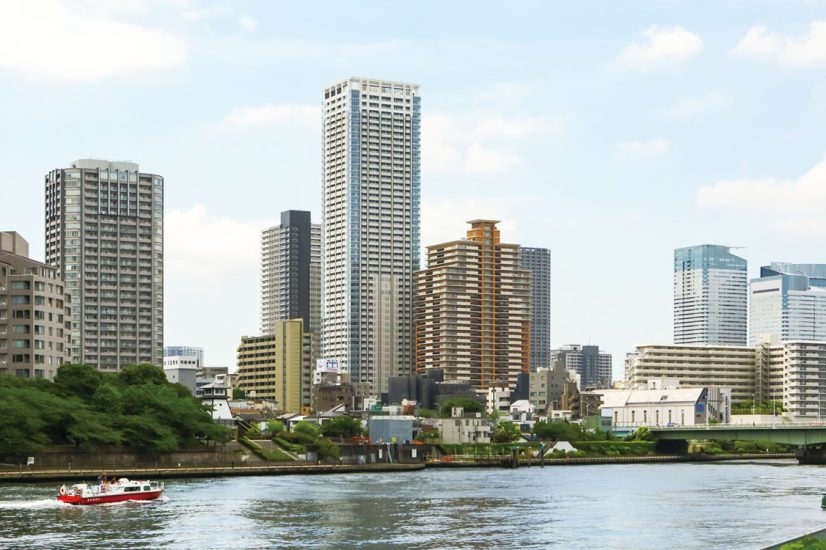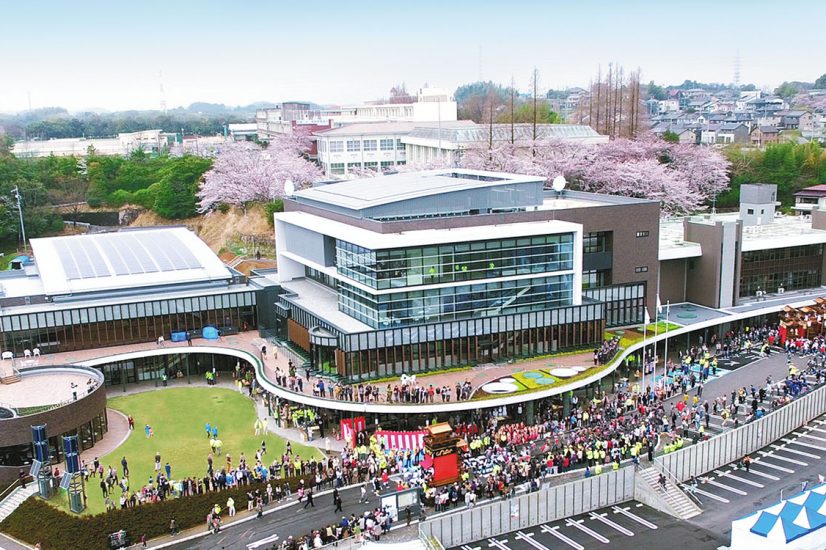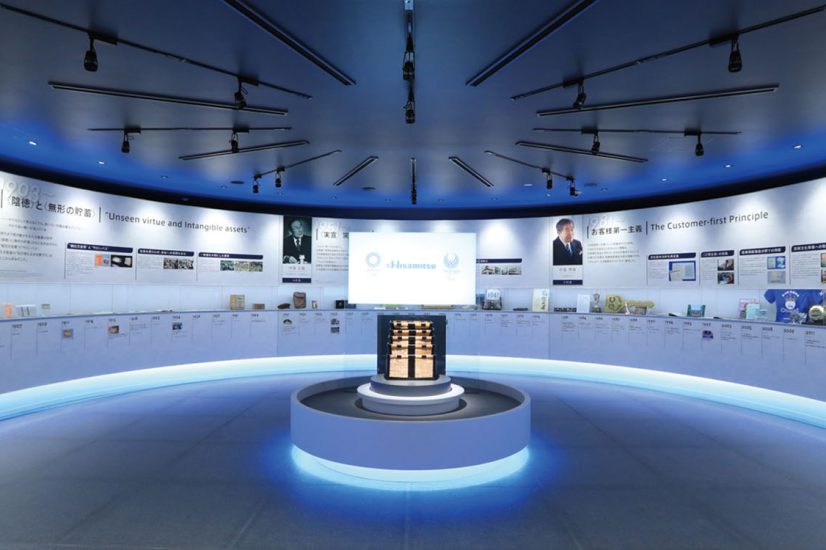Yasui Architects & Engineers, Inc.
Yasui Architects & Engineers, Inc.
A stadium that embodies the passion
The Suita City Football Stadium
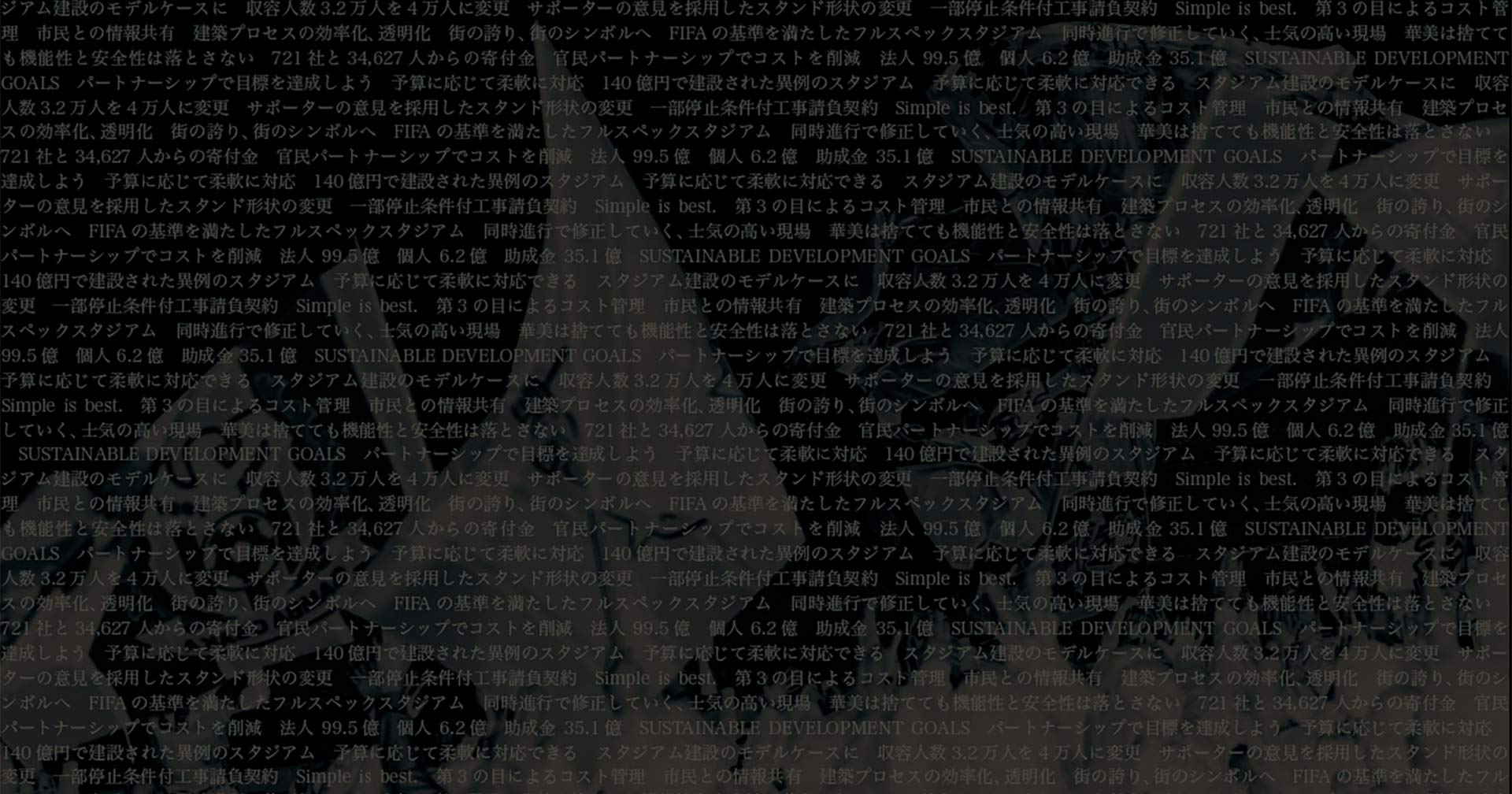
In liaison with the client and the design-build contractor, our construction management service supports the project of building a stadium with donated funds through to completion
The Suita City Football Stadium (hereafter referred to as “Panasonic Stadium SUITA ”) has been designed with ingenuity and care that only a dedicated stadium can achieve: the optimum sightline and layout of the seatings, the immersive experience provided by the proximity of the pitch and spectator seating, and clearly designed crowd circulation within the facility. When the stadium, the home of J. League Gamba Osaka club, was completed, there must have been a sense of respect and empathy behind many supporters and soccer fans’ interest in it, for the funds for construction were raised through donations and subsidies by a private organization without relying on the government. The construction cost of this facility, which meets FIFA (the Fédération Internationale de Football Association) guidelines with a 40,000-people capacity to host international matches, was approximately 14 billion yen, less than half the cost of major domestic stadiums in Japan. The construction management (CM)—a consulting service that utilizes specialized knowledge to organize opinions and share information between the client and the design-build contractor—was the key to completing such a highly functional stadium, while also fulfilling the needs of soccer fans on such a limited budget. “Building construction is a once-in-a-decade project for companies and organizations. The role of CM is to act as a liaison between the client with no architectural expertise and the design-build contractor. It also provides a clear indication from an expert’s perspective to the internal and third parties as to whether the construction project is economically and quality-wise appropriate,” says Takahiko Mizukawa , who has been promoting CM projects within the company since 2006.
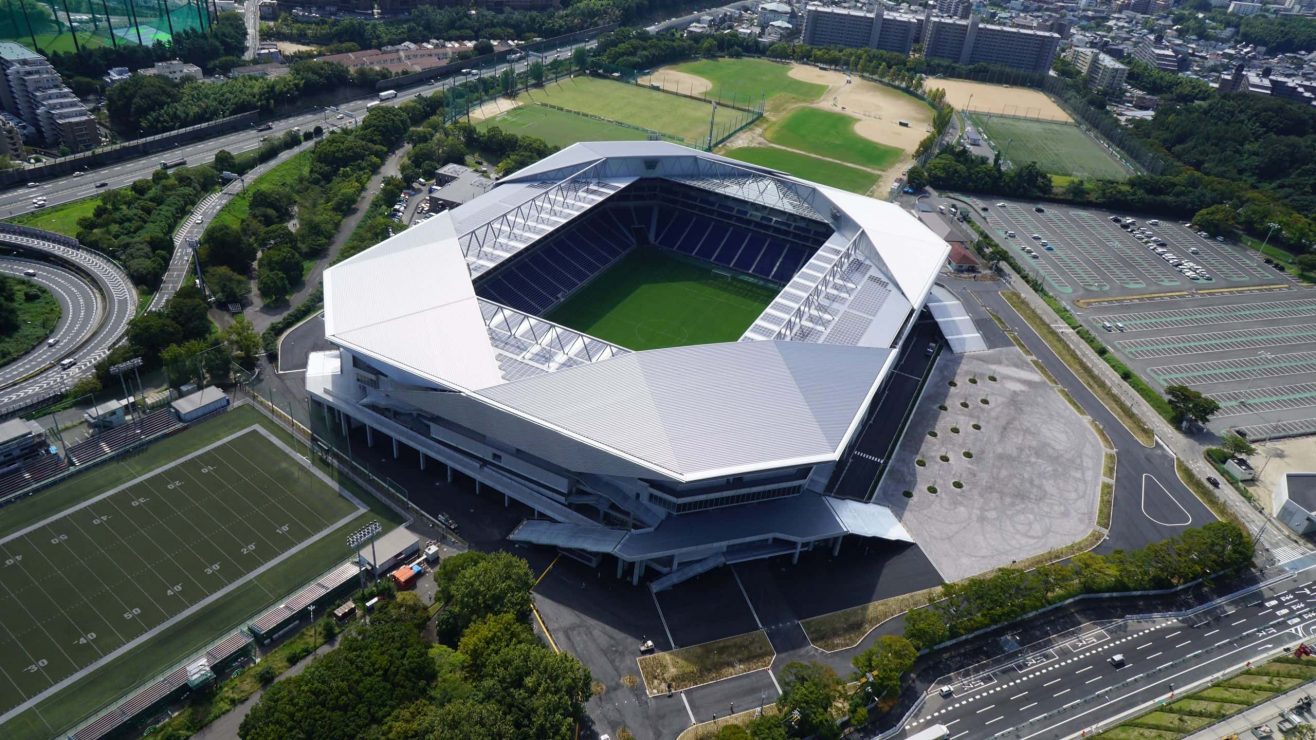
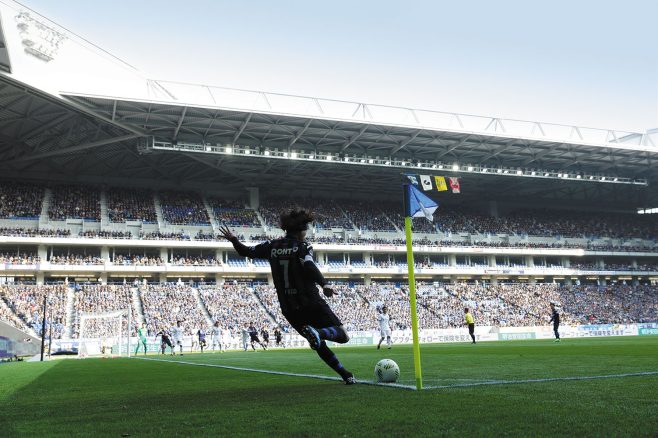
Making the best possible choice while representing the opinions of both the client and the design-build contractor from a fair standpoint as a third party with architectural expertise
The concept of Japan’s first stadium to be built with donated funds to revitalize the Kansai area began to unfold in the fall of 2009, six years before the stadium was completed. After being appointed as construction manager (CMr) by Gamba Osaka, which had already decided to be financially independent of the government, Mizukawa’s first task was to research and analyze stadiums in Japan and overseas, as well as to concretize the client’s request. “When compiling a document outlining the client’s vision for the stadium, we had to ensure that it was consistent with everyone’s wishes and the architectural regulations. Although minimizing the construction cost was the prerequisite as long as they decided to go with fundraising, it can still vary greatly depending on the construction details, making the preliminary guidelines so critical.”
As a CMr, Mizukawa commissioned design-build construction firms to make proposals based on the requirements for unexpected items that could come up during construction, including the maximum construction cost, a way to increase the seating capacity from 32,000 to 40,000 in the future, and the building site of the stadium. “Regarding construction unit price, we discussed with Gamba Osaka to ask for 400,000 yen per seat, whereas the general market price for stadium construction is around 600,000 to 700,000 yen per seat. The construction companies proposed various ideas and cost-saving plans, just as we expected that competitive principle combined with outstanding capabilities of Japanese general contractors would produce a result even closer to our ideals.”
After reviewing each proposal, the client decided to settle on the 40,000-seat capacity. Modifying the seating arrangement on the home side, adding seating, and using precast concrete in all areas, including spectator seating, beams, columns, and foundations, could have increased the project’s cost. Yet, Mizukawa explains, “We were able to anticipate problems that might arise during construction and take preventive measures by having the same company handle both design and construction. It was advantageous of this scheme to be able to incorporate the construction expertise at the design phase.”
Most of the construction costs consisted of concrete for the building structure and steel frames for the roof. Underlying the proposal for precast concrete by a general contractor with extensive experience in constructing large-scale facilities is the anticipated post-earthquake surge in material prices and labor shortages. In fact, the reason behind their success in keeping costs and the construction schedule under control despite such conditions lies in the building process being streamlined by introducing the construction expertise (e.g., the use of precast concrete and the pre-ordering of steel frames and reinforcing bars) during the design phase. “A CMr is an architectural expert who does not undertake design or construction; we can participate in the project as a third party without any conflict of interest. Hence, we can convince the client of the intention of pre-ordering materials and using precast concrete by conveying their benefits. Since architecture is a single product, an important task for a CMr is to make the best and timely choice among various possibilities and to represent the opinions of not only the client but also the designer and the constructor.”
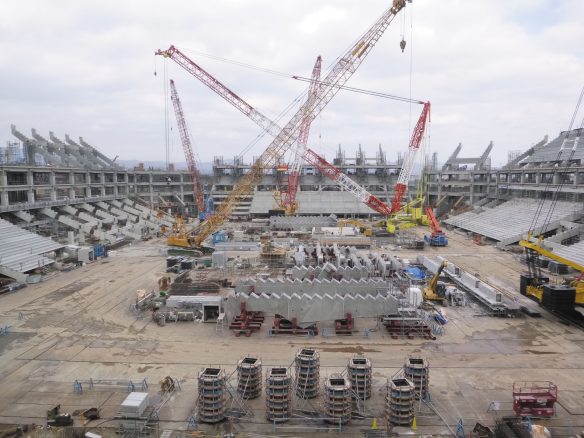
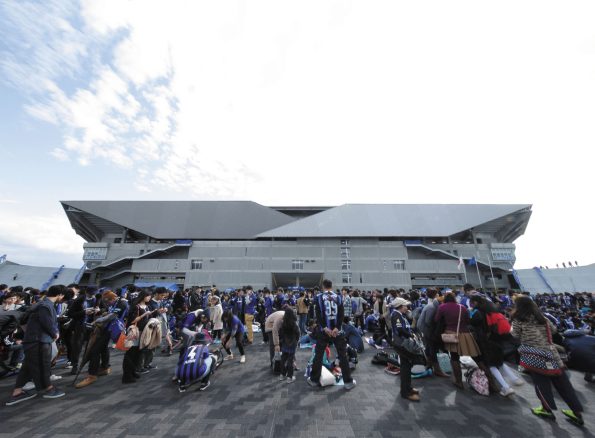
Council approval for Suita City to own the stadium
The proposal for a construction contract with a partial condition precedent untangled the concerns of all involved.
Mizukawa adds that it was more important than usual to overcome not only the practical aspects of design and construction but also the administrative and legal aspects of the project to proceed with the unprecedented initiative of using donations as the stadium’s construction costs. “We had to gain a public declaration of intent, so-called council approval from Suita City to own the stadium, to have the Taxation Bureau approve it as equivalent to a donation to a public entity, which would be a tax-exempt, tax-deductible expense. Fundraising activities cannot begin without council approval amid concerns about how Osaka’s financially strapped administrations will maintain and manage the facility. Following extensive discussions between the fundraising organization and Suita City regarding the terms of taking donations , they agreed that the facility operator would bear the maintenance and management costs. Fundraising activities finally began in December 2011 when Suita City officially declared stadium ownership.”
Another significant achievement of this project was the construction contract with a partial condition precedent, which Mizukawa employed as CMr. “In contrast to ordinary construction projects, which would proceed only upon determining fund source, this project was unique in that the order placement and fundraising were carried out simultaneously. Therefore, we were concerned about whether donations would reach the target of 14 billion yen by the deadline and, if not, what we would do about the shortfall. In response to these concerns, we employed a construction contract with a partial condition precedent, allowing construction work to be canceled depending on the amount of funds raised, and made a list of items that could be canceled if there were not enough donations. It helped to alleviate the anxiety of both the client and the contractor.”
During the fundraising period in 2013, Gamba Osaka was relegated to J2; however, they won the triple crown of the J-League, Yamazaki Nabisco Cup, and the Emperor’s Cup in the following year. With a tailwind at their backs, the fundraising reached its goal, and the stadium was completed.
The Panasonic Stadium SUITA has become an ingenious model in stadium construction, in terms of all-donation-financed construction and post-completion donation of the facility to the public organization. The role of CM services in improving the efficiency and transparency of the construction process and promoting improvement projects for public facilities suitable for the next generation will become even more essential in the future.
